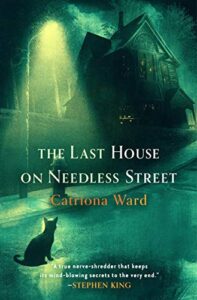

Dear Laura by Gemma Amor
Self published, 2019
ISBN: 978-1-797875-7-12
Available: Paperback, Kindle edition
There are a lot of horrors in modern reality that don’t require monsters and boogeymen. When combined, child abduction and fear of the unknown are two of the most effective ones. In Gemma Amor’s quick 120 page novella, she uses them well. This is a fast story with no drag between the pages, although the minimalist style she writes with may be off-putting to readers who prefer heavily developed stories. Those who get squeamish about child abduction and murder in their fiction may want to look elsewhere, although there are no gory details.
Laura is a 14-year-old girl, who has the misfortune to leave her best friend and first boyfriend, Bobby, alone at the bus stop for five minutes. She returns to see him violating the #1 rule for kids: don’t ever get in a van with a stranger. The van leaves, and that’s the last anyone ever hears from Bobby. It’s not the last Laura hears, though. On her birthday, she receives her first letter from ‘X,’ who claims to have taken Bobby. Thus begins a bizarre game of quid pro quo, where X reveals a little more of Bobby’s fate with each yearly letter, as long as Laura leaves a personal object he requests at a specified location. Some of the objects are mundane, and some require a personal and painful sacrifice of a physical nature from Laura. This continues for decades, until the story resolves in the final few pages.
The story is told in the third person, and only from the point of view of the protagonist, it never shifts away from Laura. The narration throughout Dear Laura is a very stripped-down, bare bones type of writing. There is little time given to description in this book, and the backstory to the characters is essentially non-existent. Dialogue? Forget about it, there’s only ~10-15 lines of dialogue scattered throughout Dear Laura‘s 117 pages. This is very straightforward writing: it tells what is happening, and doesn’t elaborate on anything. Does the simplistic style weaken the writing? No, it doesn’t. Considering the bleakness of the subject matter, the basic style that author Amor uses lends to the curiously odd appeal. People always seem to want answers to everything in life, and when people read books, they don’t want to just know what the villain did; they want to know WHY he did it. Amor doesn’t waste time elaborating on such niceties, as they would get in the way and slow down the story. That’s why her sparse writing style really shines with the novella’s subject matter. Sure the reader will have more questions than answers at the end of the story, but often, that’s what life is like anyhow. Considering how often people in this world do evil things for no particular reason, the overall lack of explanation for actions of certain characters in Dear Laura make it all the more interesting…and realistic.
For readers that want an interesting, quick-paced story with no wasted time, Dear Laura should land right in their wheelhouse. Most readers should find this appealing, the only exceptions being people who require densely layered stories and no plot holes. Recommended.
Contains: violence, child abduction
Reviewed by Murray Samuelson
Editor’s note: Dear Laura was nominated to the final ballot of the 2019 Bram Stoker Award in the category of Superior Achievement in a First Novel.






Follow Us!